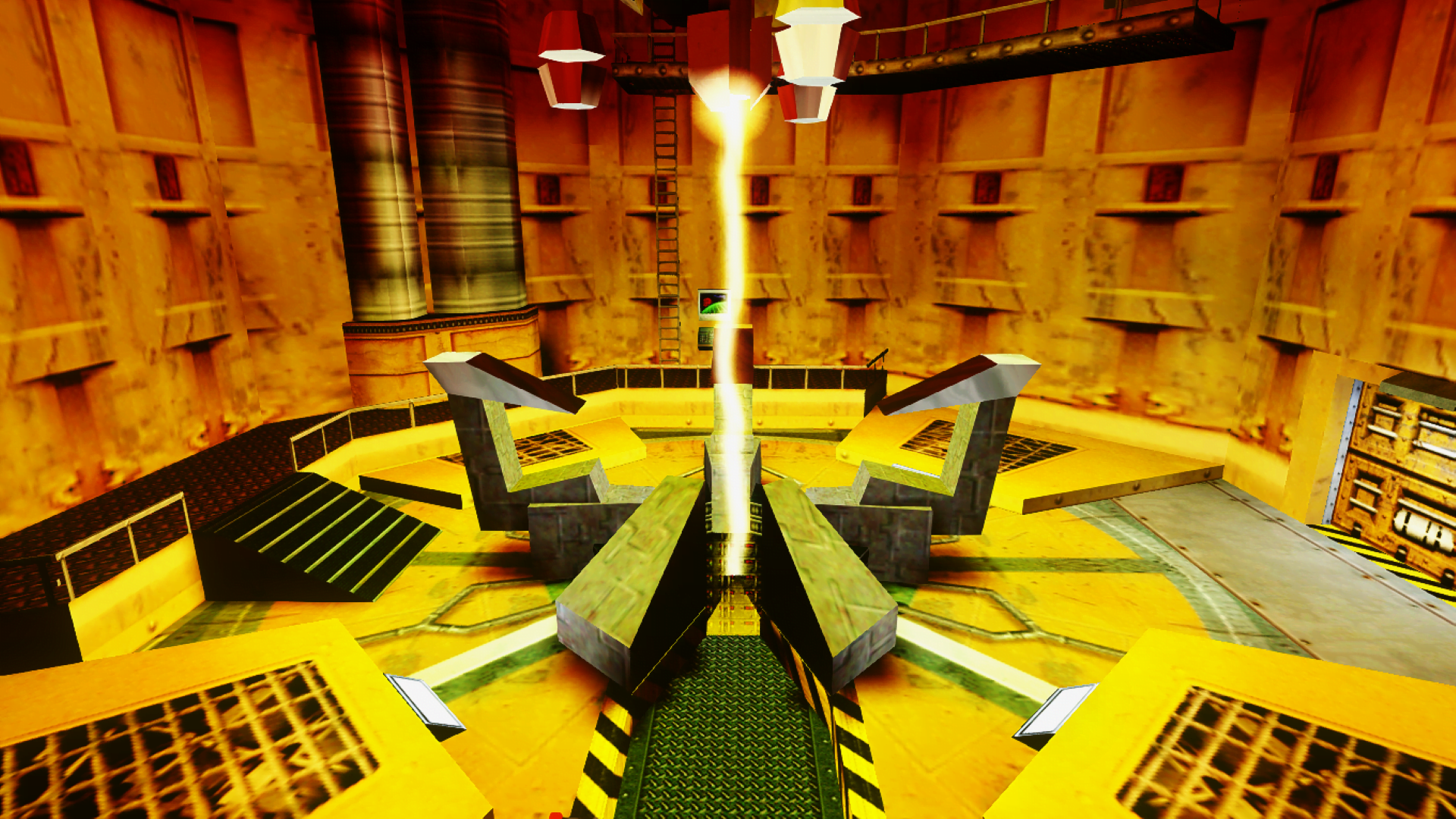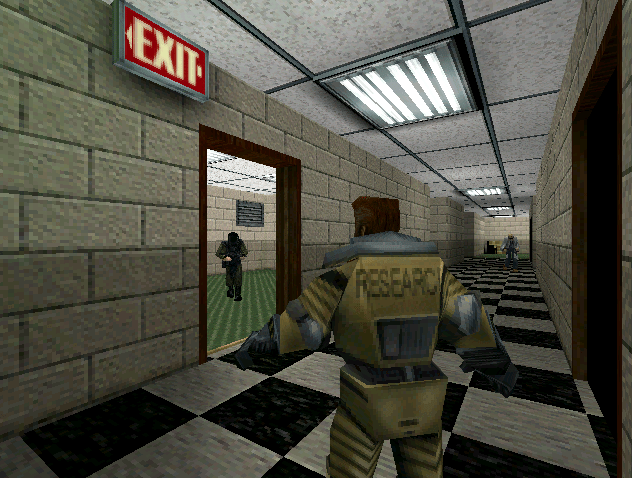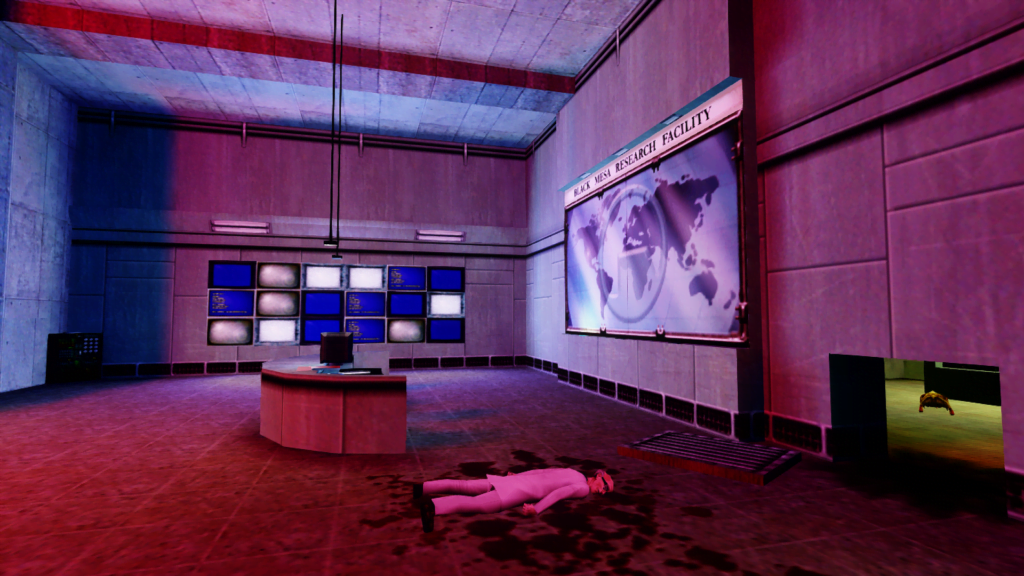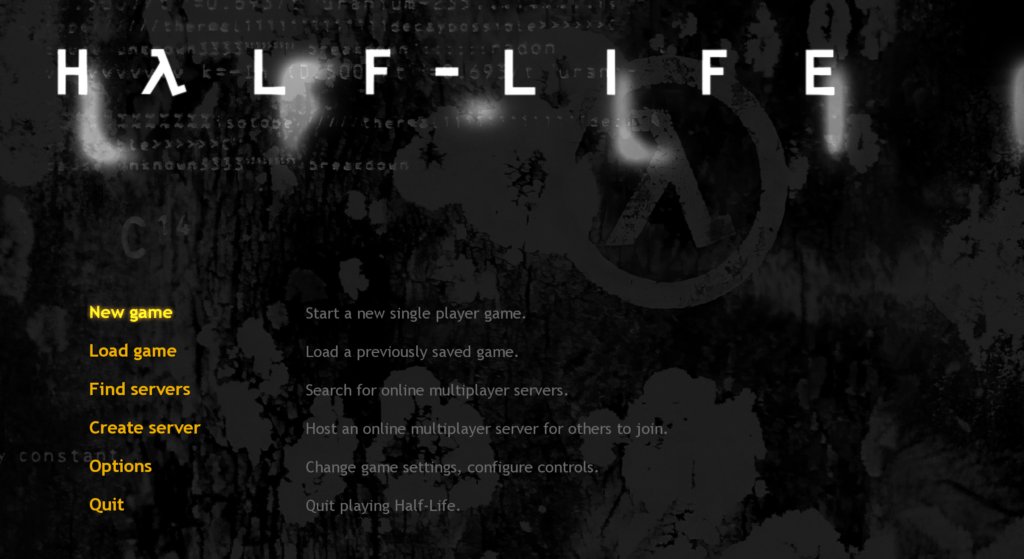Half-Life, the game which propelled developers Valve towards gaming superstardom, was first released on 19th November 1998. As the first game from the studio, it set a new benchmark for action and storytelling in first-person shooters, moving away from the story-light presentation of predecessors such as Doom and Quake. It offered a level of unprecedented interactivity combined with incredibly satisfying shooting mechanics, and remains incredibly playable and fun to this day. What is our editors’ history with this totemic game?
GB: I’m in the odd position of only playing Half-Life after playing quite a lot of Half-Life 2. When I got the Collector’s Edition of Half-Life 2 for my birthday in 2005, it included with it a copy of Half-Life: Source, the version of Half-Life Valve released in 2004 which was built in their new engine and contained some different water effects but which was otherwise essentially identical. Despite playing it fresh off the back of the truly groundbreaking sequel, I immediately saw what made the original so beloved. I still adore the deliberately slow intro to the Black Mesa Research Facility, the extended tram tour followed by just walking around Sector C before the resonance cascade accident. It successfully puts you into the setting in a believable way, and immerses you into the story from the outset. What’s your history with Half-Life, Mr. Johnson?
AJ: While I played Half-Life: Uplink on an old PC Gamer demo CD, my first “real” encounter with Valve’s first masterpiece was in 2002. I had a copy of the Generation set, which included both the main game and the expansions Opposing Force and Blue Shift. For that reason, I’ve always felt those add-ons to be integral parts of the whole Half-Life experience. The thing that really struck me at the time was the seamless first-person perspective, which really allows players to inhabit the role of plucky, heavily armed scientist Gordon Freeman. I remember poring over PC Gamer’s original rapturous review of the game from 1998, and agreeing with every word. Did you find the gameplay as compelling as the story?
GB: Yes, honestly. Half-Life is a surprisingly tough game in many places, with the HECU commandos especially having really advanced AI for the era, capable of flanking the player and flushing you out with grenades. They’re also fairly tanky, meaning it always feels like a challenge taking them on. Likewise later in the game enemies such as the Alien Grunts also pack a punch, requiring heavier weaponry to dispatch quickly. Gordon also is slowly provided with a very large arsenal of weapons to use against foes, meaning if you run low on ammo, you’ll almost always be able to swap to a different gun to continue the fight. And there’s always the iconic crowbar of course. What do you enjoy about the gameplay?
AJ: Half-Life’s shooting is ironically not one of its biggest strengths. As you say, the combat works because of the wide variety of weapons and the consistently engaging AI, and not because any specific guns are particularly great. Honestly, the exploration aspect may be the best part of gameplay. Valve were careful to make sure that this took up a fair chunk of the player’s time, and discovering more of the Black Mesa Research Facility is a thrill, particularly the first time around. I still feel it’s one of the most compelling locations in the history of the genre.
GB: Despite the sequel going in a radically different direction with the plot than one might have imagined, I actually really enjoy the relative simplicity of Half-Life’s story, which provides little extra snippets should you look closely. For example, the nature of the resonance cascade accident is left unexplained, but it’s heavily inferred that it is caused deliberately by the G-Man (the anonymous man in the blue suit seen throughout the game). Likewise, the experiments that Black Mesa were doing on the alien life of Xen clearly shows that they were aware of the border world for much longer than Freeman was privy to, having made previous journeys there using the portal technology discovered in the Lambda complex. You feel the passage of time as you explore deeper into the facility, and as the alien invasion progresses. Did you enjoy the hard pivot the story made in Half-Life 2?
AJ: That sense of implication, rather than outright stating of facts, is a real strength of Half-Life. There is an exciting sense that there is more going on than Freeman, Shepherd, or Barney can ever get a handle on. That is a big part of the brilliance of Opposing Force, which exposes players to the perspective of the HECU and makes some of them sympathetic – especially after their betrayal by the Black Ops forces.
The big shift in Half-Life 2 was a clever one. To me it reflects Valve’s refusal to stand still, or ever to make the obvious or predictable move. A part of that larger work implied by the first game was suddenly revealed in a compelling way, but with more mysteries still opening up. Valve’s failure to continue to build on this (outside of Half-Life: Alyx) represents a black mark against them, unfortunately. Like many people, I long ago lost my strong love for and identification with the studio. Half-Life remains an immortal game, though, and my love for that shows no sign of diminishing.
With Half-Life: Alyx released in 2020, we’re still waiting for the mythical Half-Life 3. Will any of us live long enough to see it? Only time will tell…








